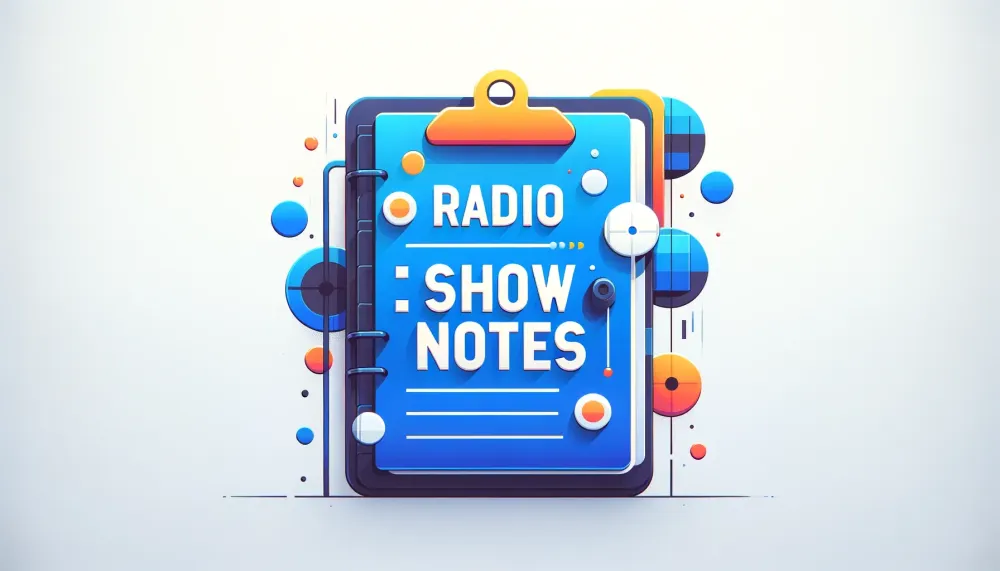Are you familiar with show notes? They are highly popular with podcasters, but they are also useful for broadcasters publishing their content online.
Today’s blog introduces show notes to broadcasters, and we will cover:
● What are show notes;
● Examples of show notes;
● Tips for writing the best show notes for your radio show;
Let’s get started:
What are show notes?
Show notes are not descriptions; they are more detailed. Ideally, they are published on your radio website, and they provide more details about the content covered in the episode. For instance, it’s typical for show notes also to include the show transcript.
Let’s look at an example:
Planet Money distributes its show on podcast directories like Apple Podcasts. Here is the show description from the “We Buy A Super Hero” episode:
The description here is just 24 words and contains a link to the Episode Website that hosts the show notes. So, once you click the link, you’ll get an entire webpage dedicated to the episode.
Several unique components have been added that were not available on Apple Podcasts. They include:
1 . The host’s names and links to their full pages (Kenny Malone and Robert Smith)
2 . Embeddable player - With download, embed code, and transcript buttons.
3 . The show transcript.
Additionally, we have:
4 . Featured image (an illustration by Siena Mae).
5 . The show summary provides a bit of backstory in two paragraphs.
6 . Additional links
In this case, they are links to the music featured in the episode:
● Last Man Standing
● A Hero Rises
● Hero Legacy
● Dream the Dream
7 . Two call-to-actions
● Subscribe to our show.
● Subscribe to our Newsletter.
Why are show notes useful?
Having well-developed show notes allows you to showcase essential information for your listeners. Your show notes can also include additional links to useful content. By adding a call to action, you encourage your audience to take particular actions and advance your goals.
The show notes can also provide SEO benefits for your radio station, allowing you to generate listenership from organic search. You need to target relevant SEO keywords.
How to write good show notes for radio shows (Tips)
#1) Write enjoyable & easy to read notes
The first rule: Make your show notes easy to read.
See, people don't read online - most skim and scan content. According to Chartbeat, overall, 55% of page views receive less than 15 seconds of attention.
How can you optimize your show notes for skimmers and scanners?
● Use lots of bullet points;
● Breakdown the content into sections with subheadings;
● Use short paragraphs, 2-3 sentences;
● Keep sentences short, not more than 15 to 20 words.
#2) Have a consistent structure (Summary, Links, CTA’s)
Don't know where to begin writing your show notes? We have a secret formula! Try including the following sections:
a) Summary (First paragraph)
Write one or two paragraphs explaining topics covered in the episode. Cover the most important talking points. Don’t explain anything or offer context.
b) Links and references
For radio shows that cover consequential subjects like money or health, consider publishing references for people that may want to dive deeper into the topic. Since most resources are online, include a section titled “References for this episode.”
Tip: Gather the links as you fact-check.
c) Call-to-action
Including a call-to-action instructs the reader on the next action to take after reading your show notes. Do you want more Facebook followers? Now that you’ve built rapport, ask the reader to follow you on social media. Got a promotion or contest? Well, ask them to sign up. Need more donations? Ask for their contributions nicely. Consider this excellent donation request by the Guardian.
#3) Keep it Short
It's better to have short and concise show notes that tell the reader all they need to know and nothing more. If any information is not worth sharing, just leave it out. Remember, you're not writing an entire transcript. Ideally, someone should just spend 30 seconds of their time and capture all they need to know.
#4) Start publishing your radio show episodes on separate webpages
That means that each radio show episode should get a dedicated page where you publish the show notes. It’s also the ideal location of the embedded player, guest photos, videos, and transcript.
#5) Look for organic keywords to target
Do you know how to carry out proper keyword research? Well, it’s something that you should start doing. Check out this definitive guide on keyword research for SEO. Ideally, you should target one main keyword and other related keywords per page.
#6) Consider adding timestamps
Timestamps allow listeners to skip ahead to specific sections of your show. In this day and age, they don’t need to listen from start to end.
#7) Share your show notes
Use the power of social media to push your show notes and get more listeners. You don’t need to copy and paste the entire content. Just copy the link, and Facebook or Twitter will fetch the preview.
Bottom Line
Radio broadcasters should consider creating show notes for episodes that they publish on YouTube, MixCloud, or podcast directories. They provide an extra means to engage the most highly motivated listeners and offer more value. And remember that you don't need to publish a 500-word show summary. With only 200 words or less, you can even summarise a two-hour show.
